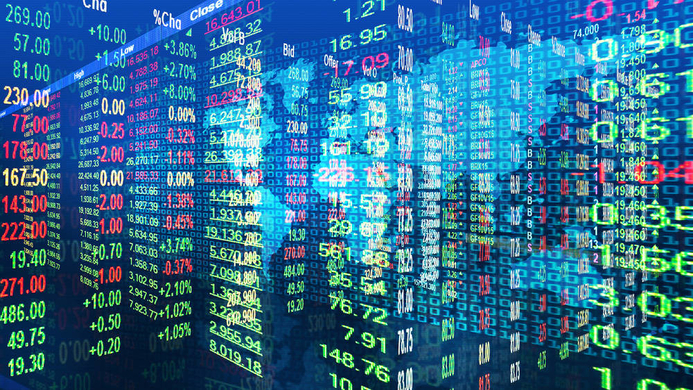During the past decade, financial markets have undergone two major changes. There has been a tremendous increase in the amount of information available to traders, and trade transactions are being carried out at a very rapid pace. Associate professor of finance Johan Hombert and his co-researchers realized that despite these important changes in market conditions, finance specialists were still relying on trade dynamics models developed in the 1980s and ‘90s. They consequently undertook to build on Kyle (1985) and craft a model of trading based on news (i.e., any and all types of information) that integrates the issue of speed.
New market conditions: massive information and fast action
Hombert explains that traders make their buying and selling decisions based on news. Traditionally, it was sourced in quarterly reports and specialized press, but now, the plethora of contemporary news sources includes online press, blogs, Twitter, other social media, and so on. To deal with today's massive quantity and constant inflow of news, traders (in small banks and hedge funds) rely on computers featuring algorithms that rapidly sort and process information, allowing them to reach relevant insights faster than ever before.
"High frequency traders" (HFT) are using quickly accessed information to act fast, making decisions and carrying out transactions in a fraction of the time it used to take. The result is a face-paced trade market and a huge increase in the amount of trades taking place.
Why speed matters
In comparison to traditional frameworks, the model designed by Hombert and his co-researchers features "the assumption of speed," which they show to have a major impact on optimal trading strategy. Hombert explains, "Every piece of new news constitutes a trading signal, so every time there is news, traders try to react. Basically, they try to buy an asset if the related news is good, and to sell if it is bad." Since news is now processed so quickly, there has been a huge increase in the volume of trade transactions.
In addition, the composition of trading activity has changed significantly. "A mere decade ago, trading was primarily conducted by traditional investors like mutual and pension funds. Now, even though thousands of these parties are still active, they account for just half of trading volume. The bulk of trading volume is produced by mere dozens HFTs (high frequency traders).”
The combination of HFTs and high trade volume has two major implications, says Hombert. The first is increased costs for finance infrastructures. "Trade structures like the NYSE and Euronext have to invest heavily in IT systems capable of handling massive amounts of data available online." The second implication is increased transaction costs for traditional investors like retail investors, mutual funds, and pensions funds.
The reason for this is adverse selection, Hombert explains, "When news is good and indicates an asset price is about to increase, HFTs react by buying just before this happens. At this point, slower traditional traders are still selling. And by the time they react, the price increase will already have occurred, so they will have to spend more to acquire the same asset. Similarly, when news reveals an imminent price decrease, fast-reacting HFTs will sell just before the price falls, while slower reactors will still be buying, and when they are ready to sell, prices will already have dropped." In short, traditional traders' lack of speed places them on the wrong side of the market.
Traditional traders' lack of speed places them on the wrong side of the market.
The impact of high frequency traders on price precision
In addition to speed, the researchers were interested in an issue that has intrigued theorists for some time: the real or imagined difference between speed and precision. "When we started this research, we were unsure whether there was truly a conceptual difference between the two. Our model enabled us to isolate speed from precision and consider them independently, and we found they are, in fact, distinctive forces." When it comes to precision, we say that prices are precise when a market is efficient, and vice versa.
Currently, HFTs claim that their presence increases price precision, while traditional traders claim the opposite. The researchers therefore inserted the question "Does the presence of HFTs make prices more or less precise?" into their model. While they did not reach a clear-cut answer, the model clarified the two conflicting economic forces in play. "We saw that in the short-run, HFTs fast reactions and actions help to integrate up-to-date, relevant news into market prices. As a result, their activity enhances price precision.
On the other hand, their predominant focus on the short-term and rapid action means that they do not take information relevant for the long term into account as much or as effectively. Consequently, in the long run, HFTs are responsible for decreases in precision." As far as Hombert is concerned, the lack of a clear-cut answer to the traditional traders vs. HFT debate is hardly problematic; what matters most is the new insight into the matter. "Theory is useful because it tells us where to look. It provides a road map. Our model highlights two phenomena and makes it possible to describe the effects of both. Empirical researchers can insert data into the model and find out which behavior dominates in the real life circumstances they are interested in."
Does high frequency trading need tighter regulation?
The presence of HFT on trade markets has raised the issue of potential regulation of this type of activity to give traditional traders a balanced chance. One proposal is to slow the market down; for example, instead of allowing trading to happen continuously, transactions might be restricted to once a minute or once every ten seconds. In that case, there would no longer be any point to being fast, and the playing field would be leveled. Hombert comments, "Such a solution would imply considerable technical complications, because technical adjustments would be necessary to ensure coordination among markets."
The counter-argument to this type of proposal is to point out that if it were really better for investors for trade markets to be regulated or for speed to be keep in check, market forces would have taken care of it by now. Many believe that market forces should be enough to establish the "right" transaction speed, and the fact that this has not happened suggests that it should not. Finally, Hombert presents a counter counter-argument. "Stock exchanges earn most of their profits from selling HFT fast access to data. In fact, this is their main source of profit. They are hardly likely to push for speed regulation, because it would not be in their interest.”
Hombert reiterates that the ultimate goal of this research was to develop a framework that describes current trading behavior and its effect on financial markets for empirical use. This objective has been attained, and by incorporating speed, the new model will enable accurate analysis of trade market dynamics in today's IT-enhanced times.











